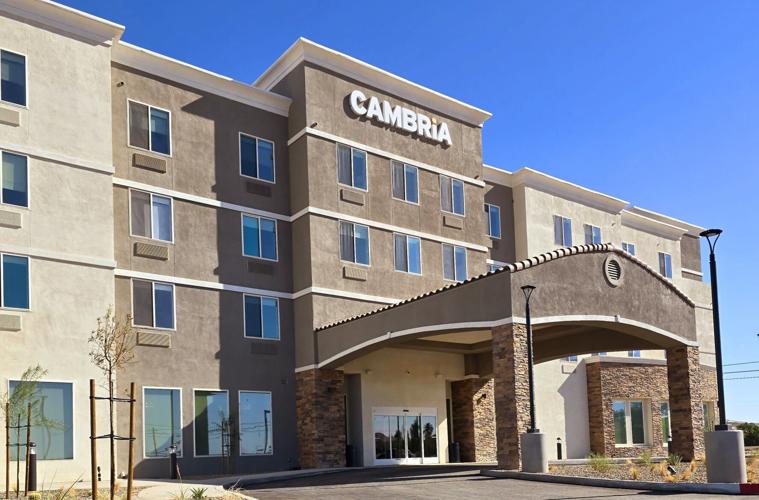6/25/18 - California Planning & Development Report: San Diego's Seaport Village To Get Major Overhaul: In the 1980s, two San Diego retail developments helped draw shoppers downtown and cement the city's reputation for innovative planning. Those popular developments were Horton Plaza, an outdoor downtown shopping mall, and Seaport Village, a touristy restaurant and shopping destination built on San Diego Bay on waterfront land once used for shipping. But San Diego is being swept by the same retail trends as the rest of the U.S., and now both projects are being redeveloped.
Horton Plaza's owners recently announced plans to convert the lagging shopping center into offices suitable for tech, while Seaport Village is slated to be transformed into a series of high-rise towers, with new retail, tech and tourist related buildings set amidst parkland. It will also include San Diego’s answer to Seattle’s Space Needle, anchoring the continent's southwestern corner. It is a $1.5 billion project, to be built on 70 acres around the current site. More than 30 acres are expected to be parks and open space. While the decline of malls and department stores sealed Horton Plaza's fate, the current 14-acre Seaport Village is still prosperous.
Its two-story buildings are a draw for tourists and locals, a San Diego version of San Francisco's Pier 39. Seaport's Village current tenant mix is made up of small businesses that aren't typically found in malls a kite store, a magic shop, a store selling magnets, and one selling tiles. "Seaport Village is entirely based on impulse purchases," said Chris Glenn, who owns four stores there. "You're not going there to buy a suit." Glenn said supporters of the village say "it's quaint," or "it's perfect and shouldn't be touched." But other San Diegans, he said, "say it's a rundown tourist trap that should be torn down."
The Port Commission aligned with those seeking a new village, and in 2016 approved a plan by Protea Water Development, a group headed by Yehudi "Gaf" Gaffen, to redevelop it. Now the group is finalizing its plans, and working on a project that could start by 2021 and be finished in 2025. The development group includes Jeff Jacobs, whose father Irwin started tech firm Qualcomm. Gaffen himself has worked on a number of big development projects, including the Great Park in Irvine, which never developed according to initial projections. The Great Park "was primarily a large metropolitan park," he said. "This is really a private development, more like a district for San Diego."
Current plans for the new Seaport include three hotels, and lots of tourist attractions, including an aquarium and a 500foottall observation tower tentatively called “The Spire.” It would be one of the city’s most prominent buildings (tied for its tallest building thanks to a 500foot height limit in the downtown area). Gaffen called the tower a "major iconic statement on the water," while cautioning its plans may be revised in future months. Gaffen said that Seaport Village "is very, very loved by many people in San Diego." But he continued, "it's lived its useful life," noting that the buildings are not designed to current earthquake standards nor for rising sea levels. "People look at the site and think it could be so much more," said Michael Stepner, a San Diego architect and former director of planning and development for the San Diego Economic Development Corporation. He called new plans for Seaport Village "a game changer."
Gaffen promises that many of the things that people like at Seaport Village will be incorporated into the new development such as duck ponds, and a carousel. Existing tenants hope the stores will be relocated there, too, Glenn said. While Horton Plaza's transformation could occur relatively quickly, Seaport Village will take longer to complete, due to its location on prime coastal land. Among the permitting agencies that will have to approve the project is the California Coastal Commission. The discovery of an earthquake fault led to a recent redesign of Seaport Village's new buildings.
"Earthquake faults are not a surprise in California," Gaffen said. "That's a technical issue that's easy to overcome." Gaffen said a project description is being finalized before an EIR can begin. Because the site is located next to the ocean, state tidelands law prohibit many uses for the property. Despite the state and city's housing crisis, no residential units are being built because of the tidelands restrictions. Conventional office space is out as well. Instead, Gaffen plans for "blue tech" offices, where businesses will focus on ocean and water. He said businesses working in robotics, underwater drones and acoustics are among the type that might move there.
Hotels planned for the site include a four-star property, and two smaller hotels: one a micro-hotel with cruise-ship sized rooms, and the other a modern hostel. The aquarium is supposed to be 178,000 square feet, comparable to what exists up the coast in Long Beach. Store owner Glenn said the project is comparable to a maritime combination of the Seattle Space Needle and Downtown Disney. "Can you think of a project of this scale on the West Coast in the last ten or twenty years?" he asked.
While the shops at Horton Plaza are expected to keep closing, Seaport Village will continue in its current incarnation for several years. Protea will take over management of Seaport Village on September 30, and is expected to keep the village open until construction begins. Gaffen said his project is different than another major downtown development that is underway, an effort to redevelop former Navy properties at the Manchester Pacific Gateway. Those plans call for 3 million square feet of mixed-used development and a 1.9-acre park on eight oceanfront blocks downtown.
That project is also huge. It includes a 17-story mixed use tower in the heart of the project, a 29-story office tower, two hotels and nearly 300,000 square feet of retail. One area the two projects overlap is in adding more hotels. "The common wisdom is that San Diego does not have enough hotel rooms," said Gaffen, noting that the need will become greater when the city's downtown Convention Center expands. Gaffen said the Pacific Gateway project is primarily a commercial project. "Ours is attractions," he said.
>>Read Article Online (a subscription is needed to access)
>>Read Article in PDF

